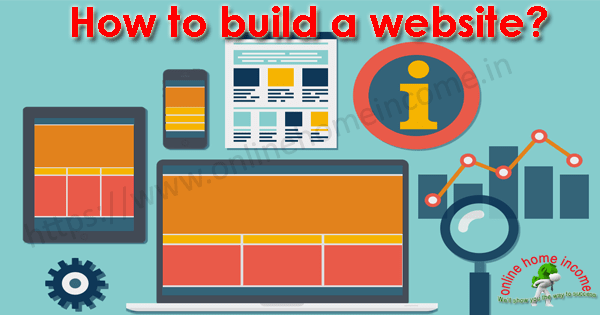Do you have a passion? If you have the zeal to share your expertise and knowledge with a huge audience, blogging is the best choice for you. In this article, we will learn in detail how to start a profitable blog to monetize from your passion.
Today, one powerful tool to share ideas and knowledge on various topics is the weblog or ‘blog’. Blogging is the best way to share your learnings, experiences, and expertise.
Blogs started as simple ‘logging’ online tools for people to share stories, recipes, hacks, etc. The growth of blogs and the blogging community has been exponential since their inception.
Google’s acquisition of Blogger allows us to create a blog without needing to own a website. Millions of blog posts started flooding the internet every day.
With tools like Google AdSense, advertising in blogs opened new means of monetization. With minimal investments, people could see a gradual and steadily rising income from their quality posts.
— Students took up blogging as a hobby to teach their peers and share exam hacks and project work.
— Homemakers started writing mom blogs, cookery blogs, and beauty and home tips.
— Working professionals discussed business tricks, solved technical problems, and shared experiences through blogging.
Such niche posts help bloggers earn a passive source of income through advertisements, promotions, etc.

These days, creating and hosting a blog is very simple with Content Management System (CMS) tools.
WordPress is one of the top website creation and hosting platforms preferred by bloggers to start with.
As your blog gets more views, your revenue can increase. By implementing proper SEO strategies, you can rank your blog on the first page.
This ensures you a regular income that can soon become your primary income source!
Every blogging domain has a sea of bloggers posting daily.
Researching before writing a blog post, promoting it after posting, and constantly improving your future content to reach various media channels is important to start a profitable blog in 2025.
Let us learn how to kick-start and monetize from your blogging journey.
Start a Profitable Blog in 2025
As much as the world of blogging welcomes anyone with open arms, not everyone has been successful.
Many people start to post for a few months and quit after seeing no traffic or expected growth. For some, fear of language proficiency can also be a reason.
With good domain knowledge and storytelling skills in English or any other language, you can definitely kick-start a profitable blog.
A common misconception among beginner bloggers is that once you publish your blog, it will find its way through the Internet and fetch millions of views.
If this doesn’t happen, many think of quitting. Without proper promotions and feedback, your views and subsequent revenue opportunities may never improve.
Bloggers today need to have their own website to show their credibility.
- With tools like WordPress, creating and hosting your blog is very easy.
- Templates are available to organize your posts topic-wise, chapter-wise, etc.
Before your blog reaches your viewers, it is evaluated by search engines like Google for its relevance to user queries.
- For this, it is highly important to optimize every blog post with search engine optimization (SEO) metrics.
So let’s see how to achieve all this systematically.
Process 1: Research, Plan, and Pick a Niche
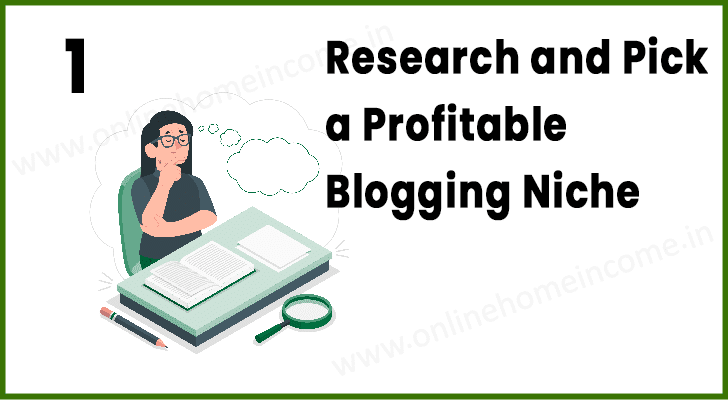
The blogging niche is the domain on which you will be creating topics and blog posts.
The first step to starting a profitable blog is to zero in on a blogging niche. It could be an area that you are skilled in.
You need not have any prior training or knowledge in the selected niche. While this does improve your credibility, rich experiences are crucial to make a blog work.
So, blogging doesn’t limit anyone to any niche. Anyone can blog on topics like cookery, travel, finance, eateries, DIY, photography, etc.
The key is to remain unique and true in your posts. Only then will viewers come to you amidst a sea of bloggers posting on similar topics.
Choosing a blogging niche is a key task. This in itself requires proper research and planning.
To see if your blogging niche will work, you will have to check for its relevance in current times.
Every year, popular blogging niches keep changing based on trending topics across geographies.
- If you are already a professional, say in diet and nutrition, you could start your blog with topics like healthy meal preparations for office-goers, etc.
- If you are an experienced make-up artist, you could start an educational blog with lessons to teach your art online.
- If you are a student who cooks in your free time, you could post some unique blog topics like quick-fix exam time healthy recipes.
- If you are a gadget freak, start reviewing the products and write a detailed post to help people find the best on the market.
Based on requirements, demands, and trends, choose a blogging niche that allows your ideas and experiences to reach a huge audience.
Tips to Select a Profitable Blogging Niche
- Google Search & Peer Blogs: Searching for topics on Google’s search bar gives you a list of existing top blogs on the same topic. From there, you can find out the content that is lacking and plan to blog on it. Google also gives you ideas on top blogging topics based on your areas of interest.
- Google Trends: This is an analytics tool that helps locate trends for topics in various regions. Typing your topic names like ‘paleo diet’, gives statistical details on which Indian regions have queries being searched on this topic.
- Social Media: Being across various social media like Facebook, Instagram, X, etc., gives you ideas on trending topics and hashtags. Joining specific online groups and communities based on your hobbies and interests gives you new ideas and topics.
Such platforms also turn out to be great places to promote your blogs.
Process 2: Choose a Domain Name and Web Hosting

Blogging mostly begins as a hobby or a pastime for many. To check if they are good at writing blogs, many wish to opt for free blogging platforms and check if they get views.
Blogger is one such platform provided by Google. WordPress also offers some free blogging options.
- Blogging on such portals would mean you would have to add ‘myblog.blogspot.com’, etc., as part of your domain name.
If you are serious about entering the blogging business, posting in free domains will not fetch you the required views for monetization. Search engines see free blogging domains as naïve and non-credible.
Such portals have very limited or standard options to innovate with blog templates and rely only on content.
These days, such methods cannot work as every other blogger provides similar content with rich multimedia UX.
With minimal views on a third-party blogging platform, your revenue dreams cannot kick off.
Having a domain with a professional website to start a profitable blog shows your authority as a blogger.
- Your blog becomes your identity, and creating a unique domain makes people learn about you by visiting it.
- Having a professional business email is possible by registering a domain name.
- Search engines rank blogs that have unique and relevant domain names as part of their SEO strategies.
2.1. Choose the Right Domain Name
Usually, when you register a domain name for your blog, the registrar will allocate an IP address to it. It is hard to remember all domain name IPs.
Hence, the domain naming concept came into existence, which converts a website’s IP into human-readable names.
To locate you and learn about your blog, search engines, as well as viewers, need to know your domain name. This is what users would be typing in a browser’s search bar to reach your blog.
Domains have extensions like .com and .org, and country-specific domains like .in, .sg, etc.
Search engines look for meaningful and relevant domain names when looking to list blogs.
For example, a cooking blog with the domain name ‘kannammacooks.com’ has a higher chance of ranking at the top for recipe queries.
Technical blogs like “stackoverflow.com,” and “geeksforgeeks.com” which started by solving computer programming and data structures-related problems, became portals for users to update their own experiences.
Let us learn some tips to get unique domain names.
- Short and simple names – choose words such that they are easy to remember and get etched in the minds of users.
- Keep the extension as ‘.com’ for easy remembrance.
- Try to make your name contain SEO-boosting keywords targeted by user queries.
- Avoid special characters in our domain names like hyphens (-) and numbers.
- Act fast in registering one or more domains as backups, as another user may use a different extension with the same name.
2.2. Pick the Reliable Web Hosting
For beginner bloggers, shared hosting is the most preferred hosting mode. Shared hosting is where several blogs share resources of a single high-performance hosting server.
The main reasons for bloggers to start with shared hosting are its ease of use and budget-friendly costs.
At a time when you must be working on blog post research, promotional strategies, SEO, etc., you can’t spend time developing a website.
We at Raj Softech offer shared hosting plans starting from Rs. 89 per month. This plan is best for bloggers who are stepping out into the world of the Internet.
- This plan allows you a network bandwidth of 10 GB, allowing ~10000 visits per month, along with 20GB of processing disk space on the server.
- Our Linux Shared hosting environment provides the world’s most popular control panel, cPanel to manage applications, files, and databases.
- We offer a Softaculous One-click installer to help users install more than 300+ web applications.
As your blog grows and starts attracting more traffic, you can move to a higher plan and migrate your domain and resources.
We offer easy upgrades and scaling options for our shared-hosted websites. With 24/7 support through calls, emails, tickets, and Instant messaging, our team manages any ad-hoc requests as soon as possible.
Process 3: Set up your WordPress Blog
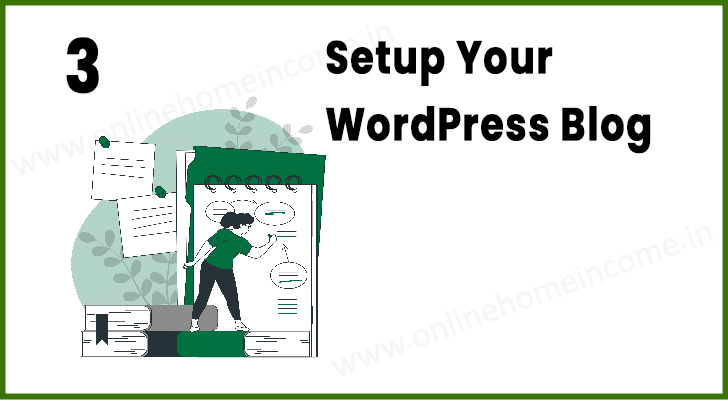
Once you acquire a domain name and a shared server to host your blog, you must get into creating your blog website.
WordPress is the most preferred website design CMS tool today. Top blogging portals like Huffington Post, Forbes, etc. are developed with WordPress.
Why is this a go-to step to start a profitable blog?
It’s because you can create a blog post or page with one click. Also, you can choose from millions of pre-designed themes and plugins and populate your website.
This saves you a lot of time and effort spent on styling and coding for your website.
- WordPress is a free software that can be installed on your hosting server’s cPanel.
- Website functionalities like security, SEO checkers, payment portals, etc., are available as drag-and-drop plugins.
Every web hosting company provides a Linux-based control panel, cPanel, to manage files, applications, and databases for your blog’s website on the server.
Steps to Install WordPress –
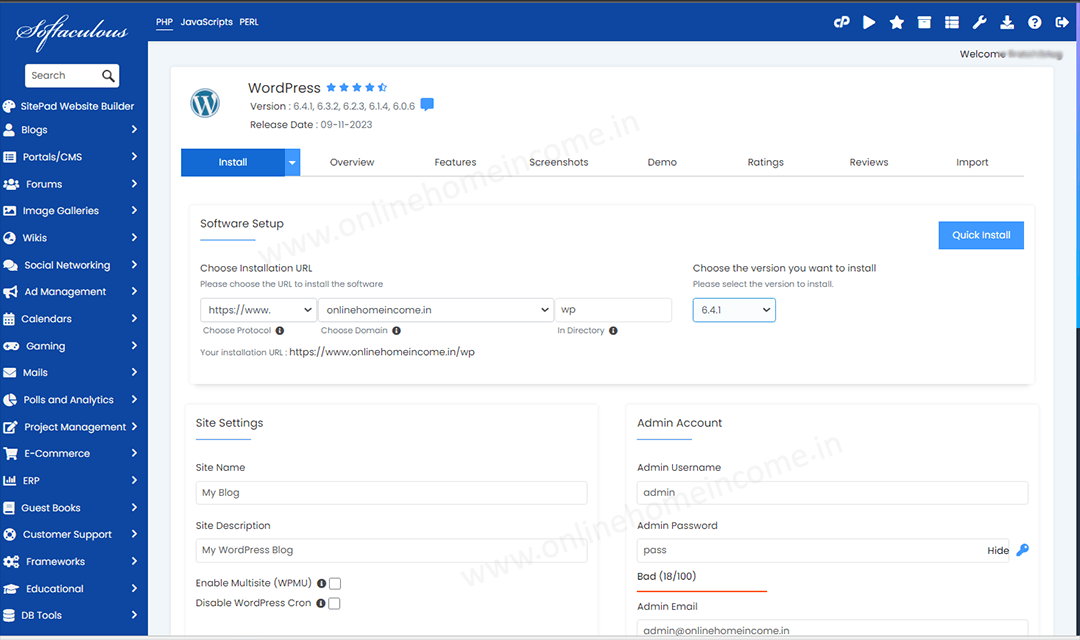
- Open your cPanel, where you will find the Softaculous one-click installer in the applications tab.
- Search for WordPress and click on “Install”.
- Fill the installation form with details like the WP username, password, email account, language, and the installation URL in your server’s directory.
- Enter all fields in the form and click Install. Wait for the process to be completed.
- Log in to your WP account to access the WP dashboard.
- In the left side menu, select Appearance > Themes. View existing themes and add new themes from the list shown. Preview your chosen theme and click on ‘Install’. Then click on Activate to replace your current theme.
3.1. Recommended WordPress Setup
Here, I refer to one of the most popular tool suites to enhance your blog.
As a successful blogger on “www.onlinehomeincome.in”, I recommend the following setup to ensure you have a great start with your blog-
3.1.1. Purchase Thrive Themes from the Thrive suite;
— This is a popular yet simple WordPress suite of website tools. It helps you add optimized themes and plugins to your website.
— You have to download the ‘product manager’ plugin (in a zip folder) after the purchase. Add the zip folder of the toolkit and select ‘Install Now.’
— Once it is done, you may see the ‘Product Manager’ option in the left admin menu. Use this to log and browse your thrive account and select required plugins.
Note: Their pricing varies based on the number of plugins used on your website.
3.1.2. Install a few essential plugins as listed below;
Once you have chosen and activated your blog’s theme, you will need to focus on adding your functions.
As a blogger, I recommend certain plugins to improve your blog and website quality.
Check the tools that I use for this blog.
Some of them are;
- Yoast – for doing on-page SEO activities on our blog.
- Akismet – for filtering and removing spam content from your comments, ‘contact us’, or any other form entry fields of your blog.
- WP Optimize – this is done to clear and optimize your databases, compress images, clear caches, etc. to improve overall website speed in the hosting server.
- LightSpeed WP Cache – provides high-speed server-level caching and optimization features.
With these, your blog is now power-packed with all the important prerequisites.
Process 4: Complete Your Blog Setup
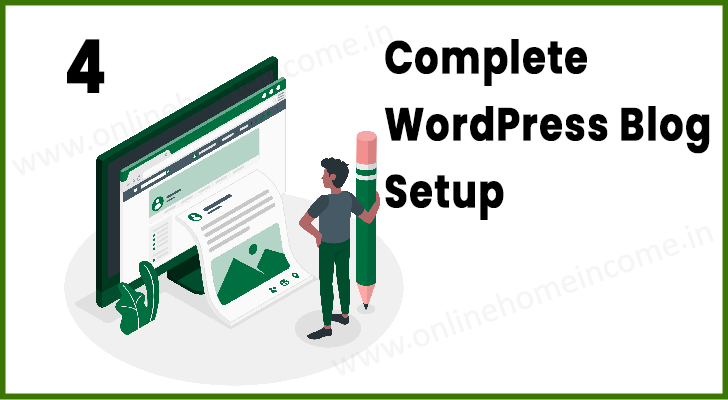
Now that you have installed WordPress and have your WP credentials. Let us begin building our blog. Log in to your WP backend dashboard with the URL “www.mydomain.com/wp-admin”.
After the theme and required plugin installation, start building foundational pages for our blog.
Any blog requires a home page that helps people see our blog details. Follow the pattern below to create your blog homepage.
- Short insights about the blog.
- The latest and popular posts on your blog.
- Your follower count.
- Index/topic lists to view/subscribe.
In short, your home page must give a complete list of your blog.
To add your home page, go to “Pages” from your WP dashboard. Click on the “Add New” option in the sidebar. Then, name it as “Home” and add an appropriate page title.
Similarly, create pages like “About,” and “Contact”.
— It is important to create a page to describe your blog, why it was started, and how users can benefit from your blog.
— Creating a page with contact details like social media handles, physical addresses, business emails, etc. improves your credibility.
You must include privacy policies and disclaimers as footer hyperlinks to separate pages in your blog.
Such information improves your authenticity and authority among blogging networks. These are also seen as ranking parameters by search engines.
Now that your blog’s skeleton is ready, let us move on to fine-tuning your blog to enhance user experience.
Process 5: Setup SEO and Analytics
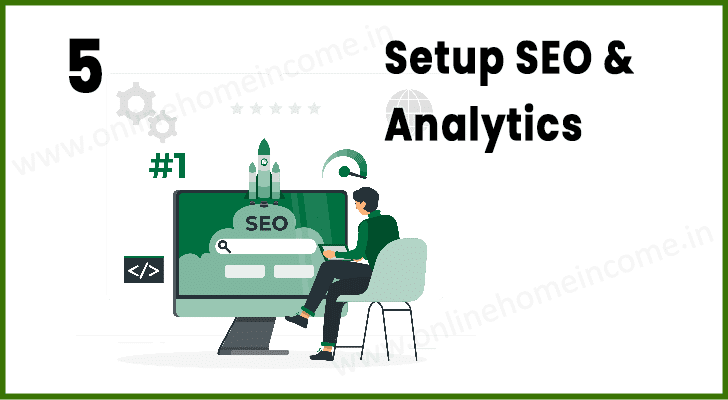
The last process in our blog setup is to perform basic SEO to make our blog eligible for ranking.
Let us start with the User Interface.
The user interface elements in your blog enhance your user experience.
- If you have many posts in your blog, you could include a ‘search’ bar. It would appear across all pages for any time search and navigation.
- Providing a sitemap helps users know the layout of your blog and how to locate the pages they need.
- If our blog has lots of topics and subtopics, add menus or sidebars to organize them in any style.
- A logo sets you apart as a brand. Get your logo designed and include it in all your web page headers and footers.
- Create SEO-friendly permalinks for every blog post, for example, “mydomain.com/how-to-start-a-profitable-blog”. Such URLs get to rank in the top search results.
3 Vital Tools for Blogging
Yoast SEO
The first readers for your blog are the search engine crawlers. So, first, you satisfy the search engines’ SEO metrics before your viewers get to read your blog.
Setting up the Yoast SEO plugin helps list what your posts are lacking to be SEO-friendly and suggest improvements.
Google Analytics
It is important to monitor your blog performance and traffic to refine your content in further posts. Google Analytics is a top tool that helps you identify trends and patterns of visitors to your blog.
It has a high-end, visually appealing dashboard showing all required data and charts for your analysis. You can register your domain with Google Analytics and perform routine checks for your blog.
Google Search Console
This tool helps measure your blog’s performance in terms of speed, interactions, and page loading. It uses Core Web Vitals to compute your blog’s user experience.
Through these scores, you can focus on areas of improvement, say, if your high traffic is slowing down your website, you may need to migrate to a new hosting plan or server.
Create Engaging Blog Posts and Integrate Monetization Method
Are you done setting up your WP blog website?
Are you able to view your blog live when entering your domain name in the browser?
Many congratulations to you. You have crossed half the journey to start a profitable blog.
Now comes the next big task. With effort, anyone can get a domain and host a blog with WP or other tools.
Your success is determined by how unique and informative your content is.
Blogs with rich experiences conveyed in a fascinating style are what people look for.
This is more important than your templates, menus, etc.
The first step to creating profit-earning blogs is to do proper keyword research. It means your blog must contain exact or similar words queried by users so that search engines can find your blog.
Then, plan your content topic-wise. Schedule your content such that you post one post a week or fortnight, depending on the reception.
Always involve yourself in creating engaging long-form blog posts to give a first-hand reader experience.
Finally, start looking out for monetization methods like integrating Google AdSense or becoming an affiliate marketer.
Let us see in detail how to move ahead in this journey.
Process 1: Keyword Research, Prepare Content Calendar
The first readers for your blog are the search engine crawlers. SEO allows these crawlers to list rich content at the top of search results.
For your blog to reach more views, you need to follow the latest SEO metrics.
So you must shortlist the right keywords for your blog topic that match your users’ intent.
— Tools like Google Keyword Planner, SEMRUSH, AHrefs, etc are good keyword research sources to explore and use extensively. They also help analyze trends for the keyword.
Content calendars are tools that help you plan and chart out your blog posting schedule.
— WP offers a free WordPress Editorial Calendar plugin that helps you manage your blog content schedule.
— Enter your blog topics and the estimated dates of publishing on the calendar dates.
It is ideal to post one blog post a week to give yourself enough time to research for the next post and incorporate feedback received for previous posts.
Process 2: Create Engaging Content
The need to start a profitable blog is to share experiences, provide solutions, or teach something new. However, blogs differ from any random articles or FAQ pages in terms of their format.
Before the viewers, the search engine crawlers read through your blog posts.
1. Long Content;
Blogs need to be long with a word count of at least 2500. This is because search engines rank lengthy and informative posts higher in top search results.
So, to keep your blog posts long, it is important to keep them engaging and fascinating. For this, the tone and language used must be like addressing a friend.
2. Strategic Keyword Placements;
As discussed earlier, you must add SEO-targeting keywords at strategic positions in your blog. But this must not appear forceful.
Such keyword stuffing or repetition can bore readers and make search engines give your blog negative SEO scores.
3. Content Quality Tools;
Tools like Grammarly, Hemingway, etc., help improve your content quality. They help highlight the usage of hard sentences and passive voices and compute readability scores.
Such metrics help you refine your content based on the literacy levels of your readers.
4. Multimedia Integration;
Adding multimedia and links like images, charts and graphs, a YouTube video, Pinterest images, etc., makes your blog easy to read.
Process 3: Blog Monetization Method

When your blog has quality posts that solve user queries, you will find more people with similar queries finding you.
Your blog’s authority and credibility increase with slow and steady organic traffic.
Once you start seeing steady, frequent traffic to your blog posts, it is time to start earning from your blog.
There are many methods to earn revenue from blogs. To get maximum benefits, try out all possible methods discussed below.
Depending on revenue levels from each method, decide how to improve and focus on lagging areas.
1. Google AdSense
You can sell empty spaces on your blog page layouts to advertisers. Google AdSense is a popular online advertisement plugin that shows users relevant ads wherever they browse.
AdSense is used by more than 2 million people worldwide for their personalized ad promotions. If AdSense isn’t working, try Google AdSense Alternatives as your monetization method.
2. Affiliate Marketing
The second most popular method of making money from a blogging business is Affiliate Marketing. Here, you sell other merchants’ products or services and get a commission on every sale.
Suppose you write a health and beauty blog, and you are getting views in millions. A new skincare brand is launching its products and is looking for ways to sell them.
Now, you have the opportunity to write and publish a post on your blog. Add their product links at different places on your blog page.
You can also become a member of the affiliate programs of e-commerce giants like Amazon, PayPal, etc. For each click from your blog to their portal or for each product sold, you can earn an amount. The higher your traffic, your purpose to start a profitable blog is fulfilled.
3. Provide Premium Content
If you have high blog traffic, you can offer premium subscription facilities for a cost. For example, you can start posting live videos or conduct live sessions for your paid subscribers.
You can have one-on-one sessions to handhold them individually, etc.
Such premium content, expert advice, and personal attention can drive up traffic to your blog. Fees can be one-time or every month.
4. Create and Sell Online Courses
Once you have a steadily growing number of views for all your blog posts, you may consider yourself established as an authoritative blogger in your domain.
For someone new, reading through all your popular blog posts one by one may be cumbersome.
To take things to the next level, you may publish an e-book or create a curated online course. This can be done at a cost or provided free for premium members.
Use WordPress LMS plugins for creating online courses and providing certifications to participants. This works great for any non-university style yet trending courses like bridal makeup, bokeh photography, stock trading, etc.
5. Offer Sponsored Posts
Partnering with brands and businesses and writing promotional blogs fetches a lot of traffic to your blog.
Such redirection of organic blog traffic helps boost sales for a lot of brands. Such bloggers become influencers, having the power to recognize businesses.
Say, you are a new mom blogging about sleeping hacks. A company manufacturing ergonomic baby carriers offers you to promote them in your high-traffic blog.
Once you try out their carrier with your baby, you can share the experience in a blog post. This can make a lot of your new-mom followers follow the brand’s page and eventually buy.
Do remember that even if you get paid or offered goods, your experiences conveyed in the post must be reliable and honest. A superficial blog promoting products will be ranked low by search engines.
Can I be able to start a Profitable Blog in 2025?
Yes, you can start a profitable blog in 2025. It is not just about writing some posts. It is about solving real user problems, sharing your personal experience, and building trust.
People come to the Internet to seek experiences and answers to their queries, hoping someone or something has an answer for them.
If your blog has content that can benefit someone, then their search query must end at your blog.
This flow is easier said than done because there are millions of blogs like yours addressing the same or similar topics.
So, how can you start a profitable blog and make it stand out?
- Choosing a proper blogging niche, with a relevant domain name, must not be skipped.
- Post this research, choose a popular hosting plan.
- With the host provider’s aid and your research, start building your blog with WP. Include relevant plugins to speed up your website and check blog quality.
- Rich content spread across various blog posts is the main focus of your blog. This will become your blog’s USP.
- Always be updated with the latest trends and your competitors’ performance in terms of blog traffic, target keywords, blog themes, and templates etc.
With these prerequisites, you will start seeing gradual traffic surges to your blog.
Still, do you have doubts and are unsure why blogging is worth it in 2025?
Learn this blog post to learn why you should start a blog this year. I have shared my own experience to help you clear all doubts.
Success will not happen the next day. Blogging is a system where you will see results and profits over time.


